Using a value-based sales approach helps sales teams succeed consistently and more frequently. These four tips from the world of value selling can help move deals through the buying cycle faster and increase close rates.
Tip #1: Focus on your prospect’s business problem.
Many salespeople rely on the following tactics to make the sale.
- They highlight the bells and whistles of their offering.
- They point out what features the competition lacks.
- They offer price discounts or other incentives to buy.
These approaches are misguided. Sales teams always get better engagement and achieve higher close rates by focusing on the business challenges the prospect is facing.
A business problem is a scenario, situation, or circumstance that is either causing prospects to spend more money than necessary or resulting in lower sales than otherwise possible. In other words, a business problem is a problem that poses a financial impact.
For example, perhaps you sell an offering that increases productivity. Productivity is a business problem, but only insofar as it represents a dollar amount that the customer is either losing or gaining.
Tip #2: Get the customer excited about solving the business problem.
We often tell our clients to imagine using a flashlight to shine a light on the size of the prospect’s problem. This sets you up to illustrate how much value your solution creates for your prospect.
Let’s say your prospective customer has a process in place for posting new job openings. This process is paper-based and requires three people to manage it. The labor cost to employ those three people is the size of the problem.
Now let’s say your company has a solution that’s electronically-based and only requires one person to manage the process. Not only would the customer save the labor cost of two employees, they’d also save on spending money to buy ink and paper. That’s the value created by your solution.
These kinds of cost savings scenarios can exist almost anywhere for customers. Your solution might reduce rent, labor costs, IT support costs, etc. Alternately, your solution might impact revenue by increasing the number of sales leads or improving an online store’s uptime. No matter what the specifics are, the general question is, “How much more money would your company be making if you deployed our solution?”
Tip #3: Create a sense of urgency to buy.
Having trouble getting prospects to make a decision? Highlighting their cost-to-delay per month can be a perfect way to spur prospects to action and get your close rates up.
This metric represents the operating income foregone each month by failing to invest in your solution. The equation is simply the total value of the problem over the period of time (and, again, could be represented by potential revenue lost, unnecessary costs, or both).
A month is usually a nice time frame, but you could also quantify the problem in weeks or years. Essentially, this calculation allows you to tell the customer, “Every month you don’t solve this problem, it’s costing you X amount.” Again, this is a way to create a sense of urgency around solving the problem.
Tip #4: Show decision makers the money.
Have you ever had a deal fall apart in the final stages of the buying cycle because the CFO or another financial decision maker didn’t believe that the investment was cost justified?
This is a common problem for sales teams. The best way to persuade any financial professional with decision-making authority is to provide them with a business case that includes the ROI.
One of our best examples to illustrate this is a story about a special kind of packaging material developed by one of our clients. The initial trouble with the new packaging material was price – it was five to ten times more expensive than the existing material customers were using (and customers were already pretty happy with the results they were getting with the existing material). Without a business case to show how the new material was a wise investment, the client’s sales reps were left to sell on price alone. Understandably, they were getting laughed out of the offices of purchasing managers around the world.
We worked with the client and performed a full ROI analysis to compare total costs of the new material versus the existing material. We discovered that the new packaging material would:
- Allow the client’s customer to fit two to three times more of its product into each package.
- Use far less energy, produce less waste, and be less labor intensive.
- Yield a lower total cost of packaging than the current material in almost all cases.
We built an ROI tool to clearly illustrate that value and turned it over to our client to use on their sales calls. They went from getting laughed out of meetings to becoming the standard provider of packaging material for eight of the top ten companies in their target market in just a few years.
Conclusion
If a CFO has a million dollars to invest, you want to make sure you’re able to make a convincing case for why it’s worthwhile to spend the money with you as opposed to funding other areas of the business or simply putting off a decision indefinitely. If you can show them the money, your sales team should have little problem achieving higher close rates.















